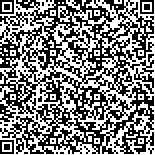| 引用本文: | 程金泉,石庆平,姜晓东,王灿,李见春,余美玲,孔令提,朱裕林.注射用丹参多酚酸盐不良反应发生率与影响因素的meta分析[J].中国现代应用药学,2020,37(11):1355-1364. |
| CHENG Jinquan,SHI Qingping,JIANG Xiaodong,WANG Can,LI Jianchun,YU Meiling,KONG Lingti,ZHU Yuling.Meta-analysis of Incidence Rates and Influencing Factors of Adverse Drug Reactions Related to Salvianolate Injection[J].Chin J Mod Appl Pharm(中国现代应用药学),2020,37(11):1355-1364. |
|
| |
|
|
| 本文已被:浏览 2007次 下载 966次 |

码上扫一扫! |
|
|
| 注射用丹参多酚酸盐不良反应发生率与影响因素的meta分析 |
|
程金泉1,2, 石庆平1,2, 姜晓东1, 王灿2, 李见春2, 余美玲1,2, 孔令提1,2, 朱裕林1
|
|
1.蚌埠医学院第一附属医院, 安徽 蚌埠 233004;2.蚌埠医学院, 安徽 蚌埠 233030
|
|
| 摘要: |
| 目的 系统分析注射用丹参多酚酸盐不良反应发生率与影响因素,为注射用丹参多酚酸盐合理应用提供参考。方法 计算机检索PubMed、EMbase、the Cochrane Library、CNKI、VIP、Wanfang Data等数据库。检索时限从数据库建库至2018年2月28日。采用R3.4.3软件进行meta分析与亚组分析。结果 最终纳入文献78篇,注射用丹参多酚酸盐患者4 118例,累计发生不良反应256例。Meta分析结果显示:总不良反应发生率为5.68%[95% CI(0.049 3,0.064 6)],神经系统不良反应发生率为3.05%[95% CI(0.023 0,0.038 8)],消化系统不良反应发生率为3.5%[95% CI(0.025 9,0.045 2)]。在神经系统不良反应亚组分析中,5%葡萄糖注射液、7 d≤疗程≤14 d、联合用药、剂量≤100 mg·d-1以及超适应证治疗不良反应发生率较高,消化系统不良反应亚组中,0.9%氯化钠注射液、疗程>14 d、联合用药以及适应证治疗的不良反应发生率相对较高。χ2检验结果显示溶媒种类与用药方式能够影响注射用丹参多酚酸盐不良反应发生率。结论 注射用丹参多酚酸盐不良反应发生与溶媒种类、用药方式明显相关。因此在临床实践中必须充分考虑这些因素。另外,年龄、疗程与剂量等因素需要进一步的研究来确认相关性。 |
| 关键词: 注射用丹参多酚酸盐 不良反应 影响因素 meta分析 |
| DOI:10.13748/j.cnki.issn1007-7693.2020.11.014 |
| 分类号:R969.4 |
| 基金项目:“重大新药创制”国家科技重大专项(2010ZX09502-003);安徽省教育厅2014年度高等教育振兴计划人才项目(皖教秘人[2014]181号) |
|
| Meta-analysis of Incidence Rates and Influencing Factors of Adverse Drug Reactions Related to Salvianolate Injection |
|
CHENG Jinquan1,2, SHI Qingping1,2, JIANG Xiaodong1, WANG Can2, LI Jianchun2, YU Meiling1,2, KONG Lingti1,2, ZHU Yuling1
|
|
1.The First Hospital Affiliated of Bengbu Medical College, Bengbu 233004, China;2.Bengbu Medical College, Bengbu 233030, China
|
| Abstract: |
| OBJECTIVE To systematically analyse the incidence rates and influencing factors of adverse drug reactions (ADRs) associated with salvianolate injection, and to provide reference for its rational application. METHODS Databases such as PubMed, EMbase, the Cochrane Library, CNKI, the VIP database, and Wanfang database were investigated using computer-based. The retrieval time was from the database establishment date to February 28, 2018. Meta-analysis and subgroup analysis were performed using R3.4.3 software. RESULTS Seventy-eight studies were included, with 4 118 patients involving salvianolate injection, and 256 presenting ADRs. The meta-analysis showed that the total incidence rate of ADRs was 5.68%[95% CI(0.049 3, 0.064 6)], the incidence of ADRs of nervous system was 3.05%[95% CI (0.023 0, 0.038 8)], and the incidence of ADRs of digestive system was 3.5%[95% CI (0.025 9, 0.045 2)]. In the subgroup analysis of ADRs of nervous system, the incidence of 5% glucose injection, 7 d ≤ course of treatment ≤ 14 d, combination drug, dose ≤ 100 mg·d-1 and off-label use was higher. In the digestive system ADRs subgroup, the incidence of ADRs was relatively high in 0.9% sodium chloride injection, course of treatment >14 d, combination drug, and off-label use. The results of χ2 test showed that the type of solvent and the mode of administration could affect the incidence of ADRs of salvianolate injection. CONCLUSION The influencing factors of ADRs of salvianolate injection are significantly correlated with the type of solvent and mode of administration. Therefore, these factors must be fully considered in clinical practice. In addition, further investigation is required to confirm whether other factors such as age, dosage, and the course of treatment. |
| Key words: salvianolate injection adverse reactions influence factor meta-analysis |
|
|
|
|
